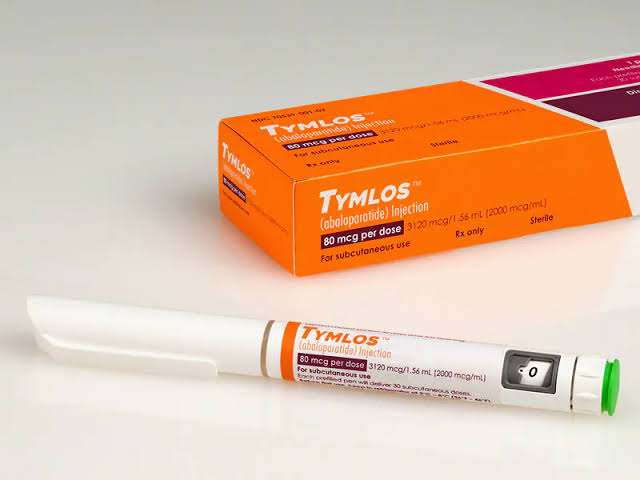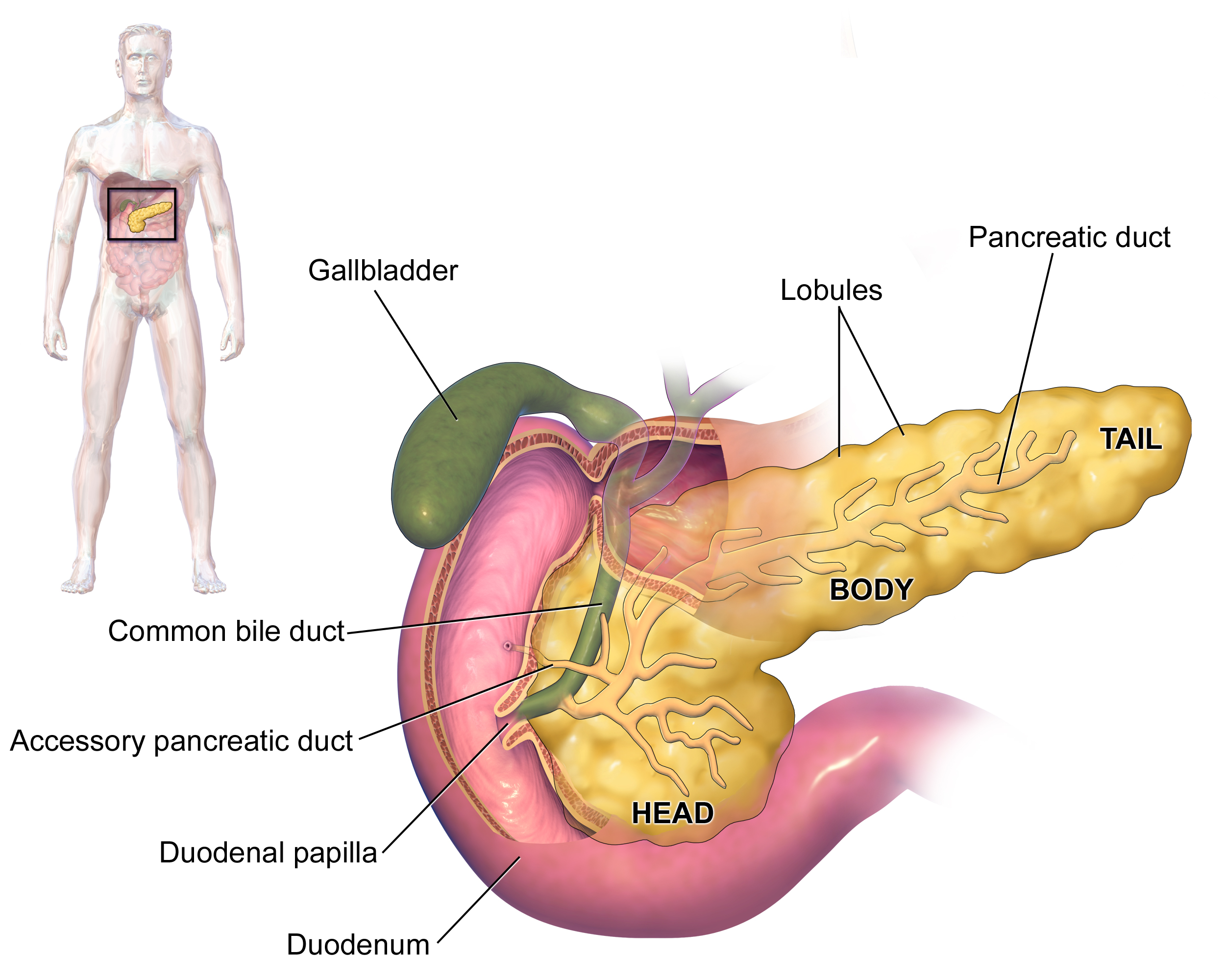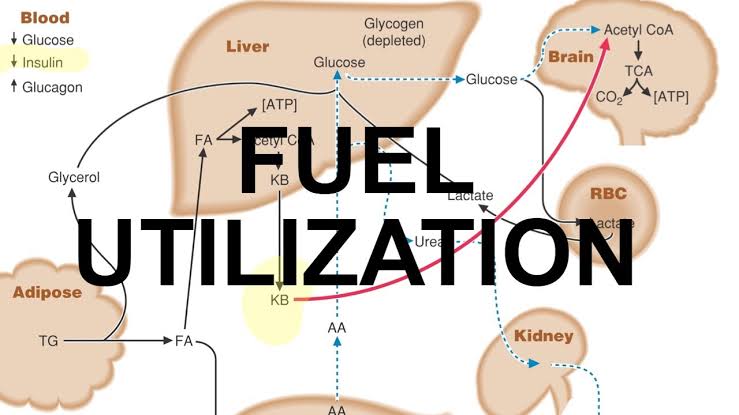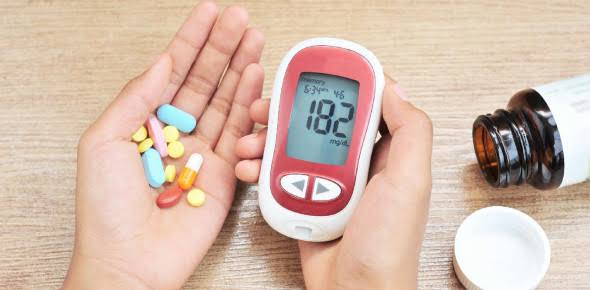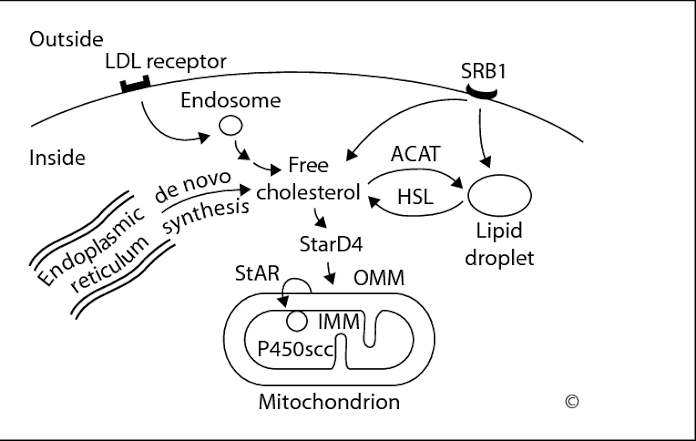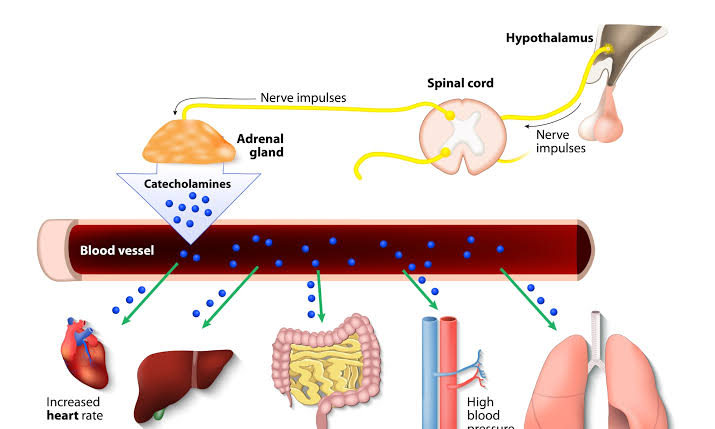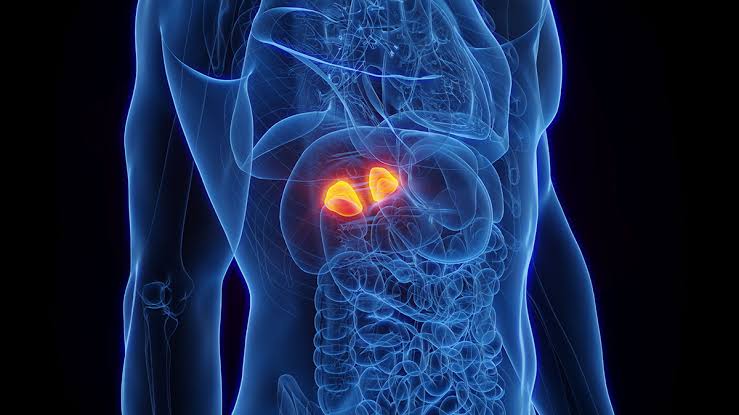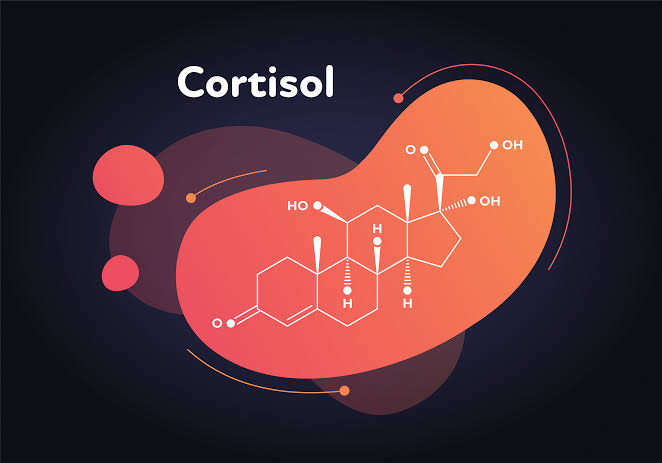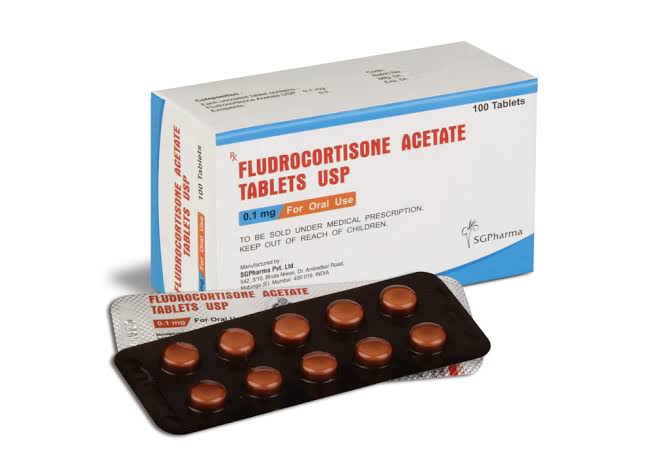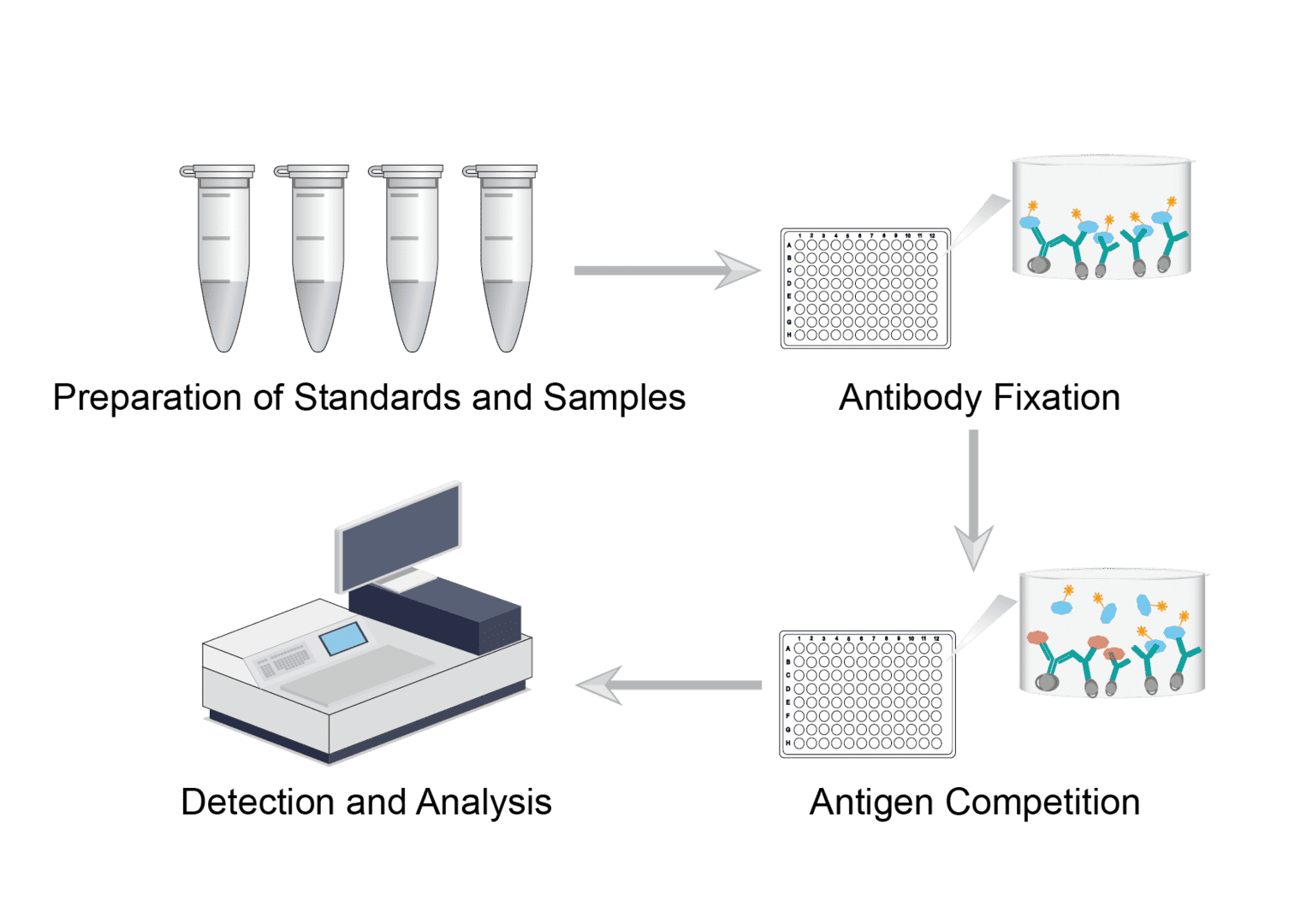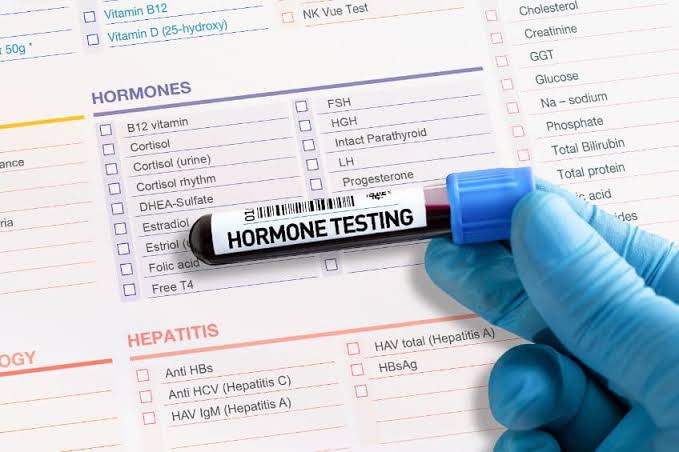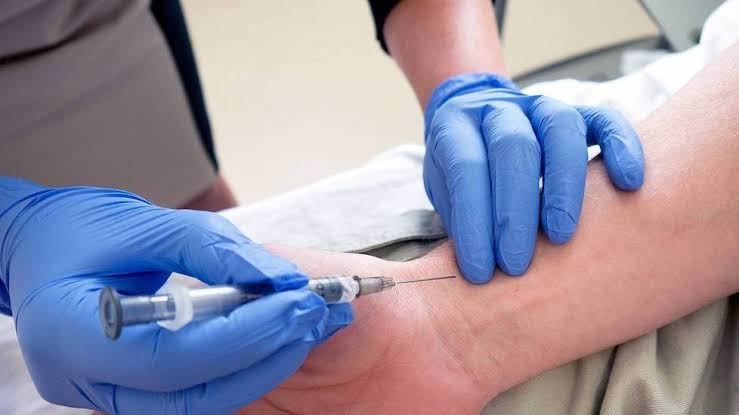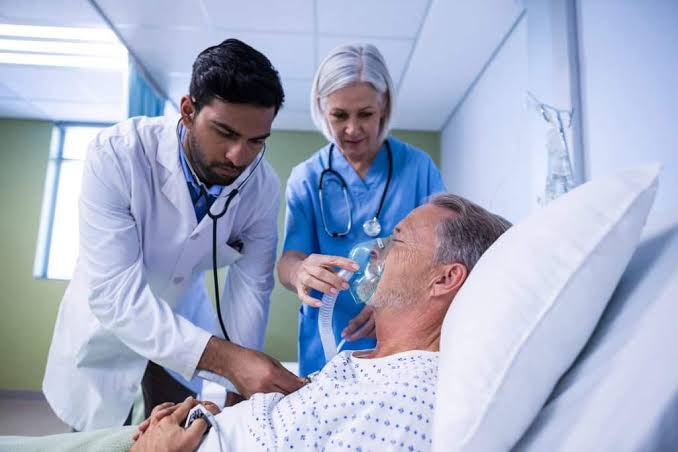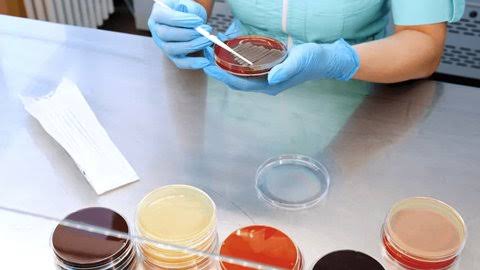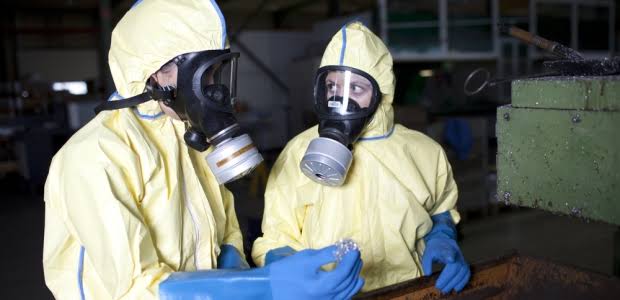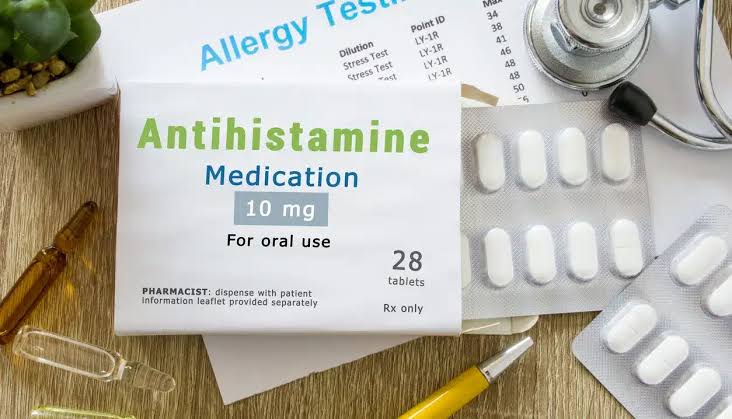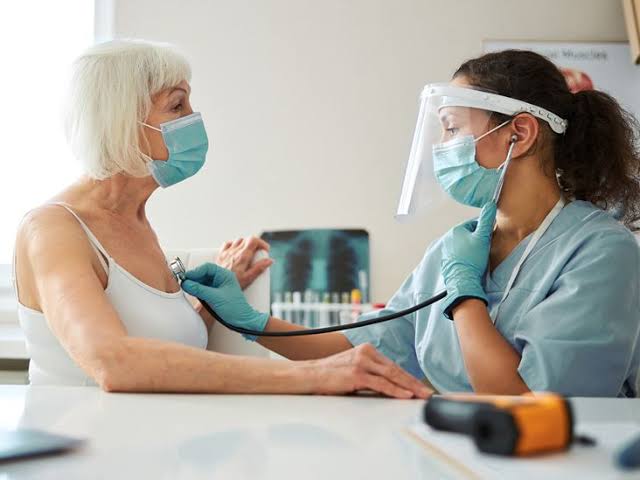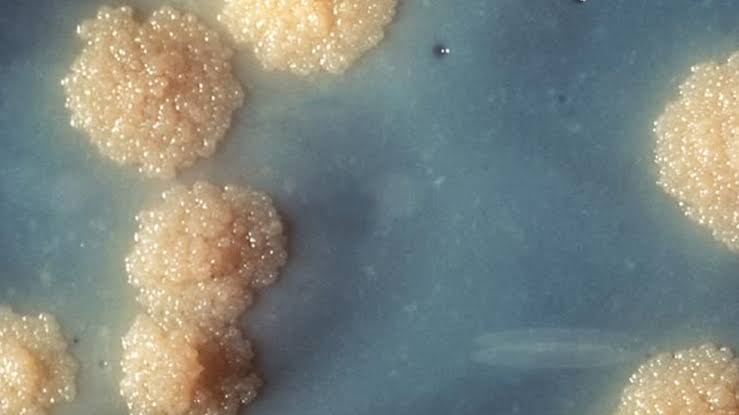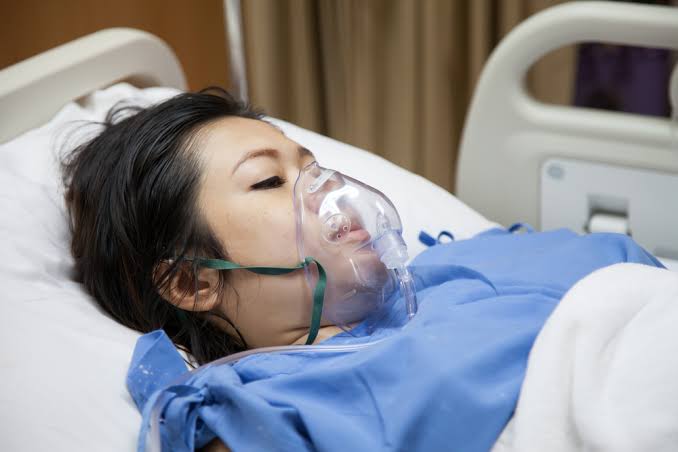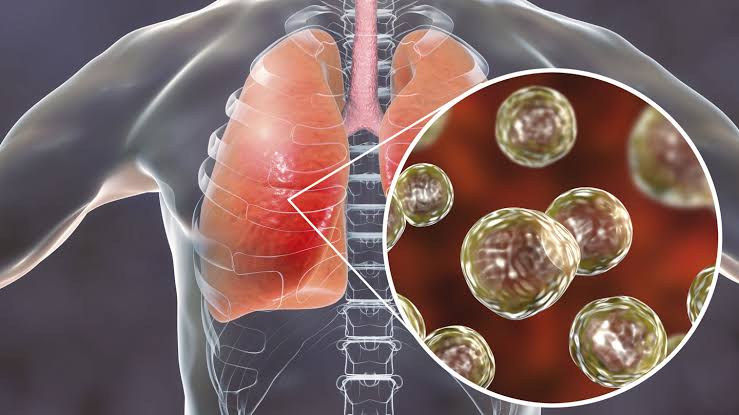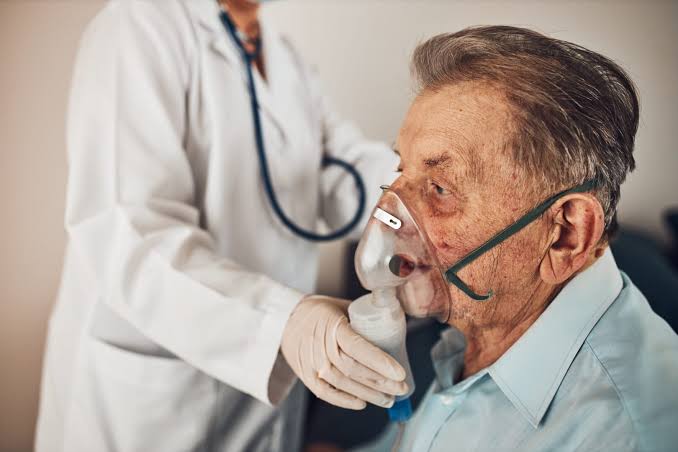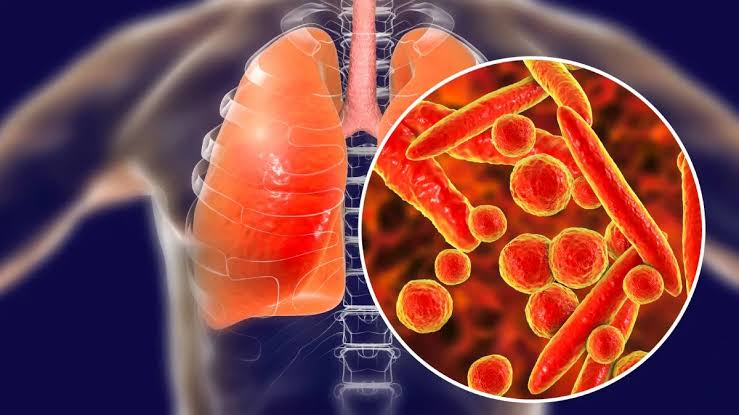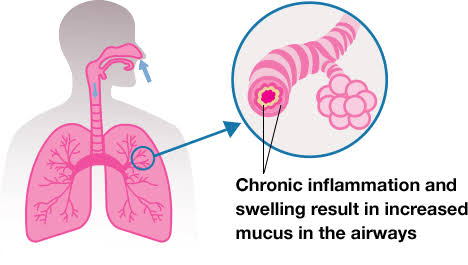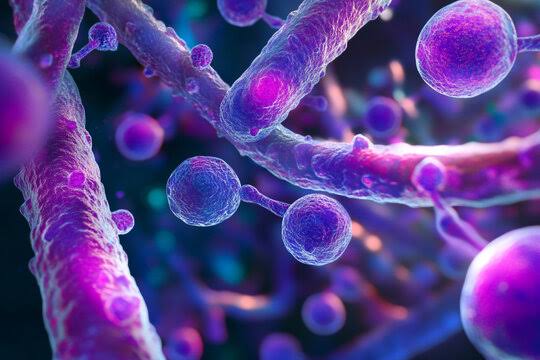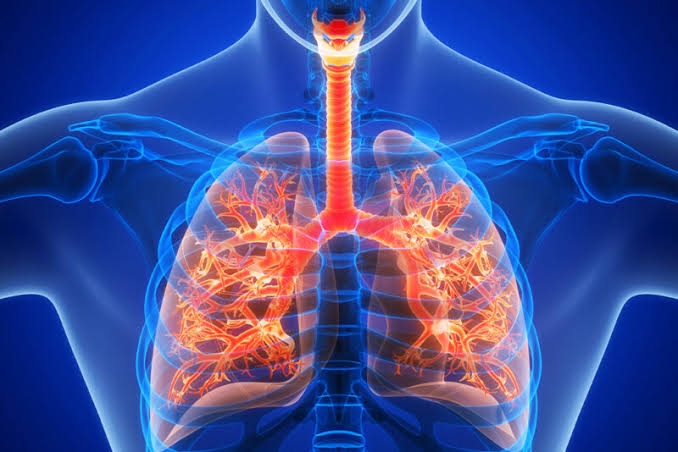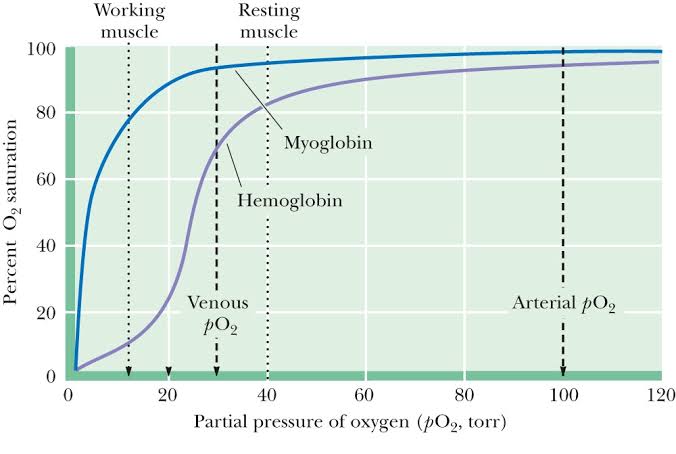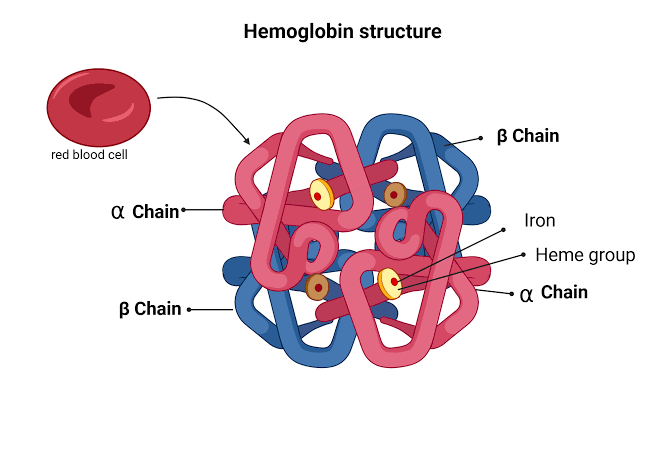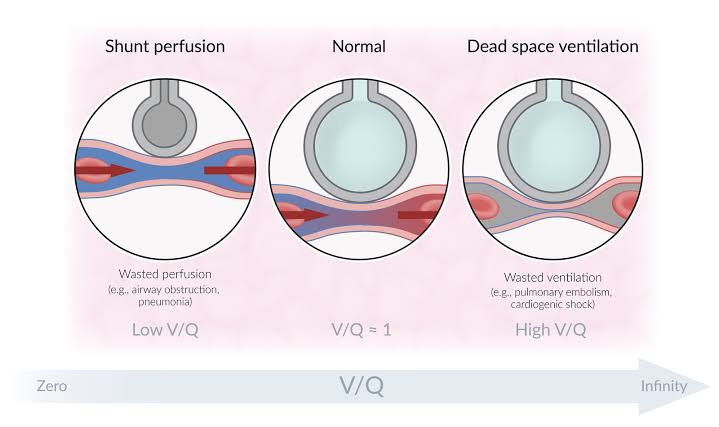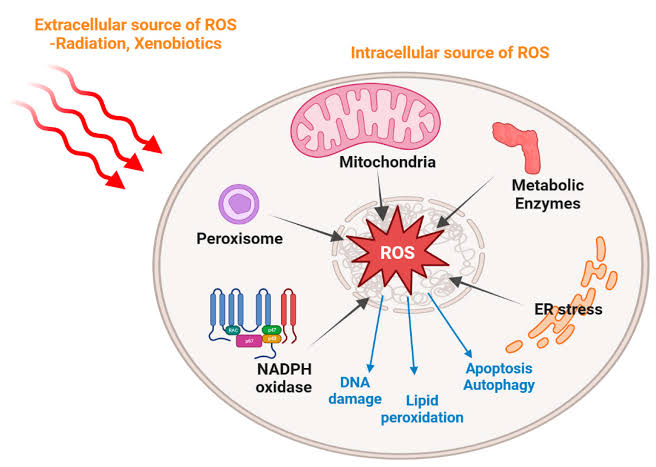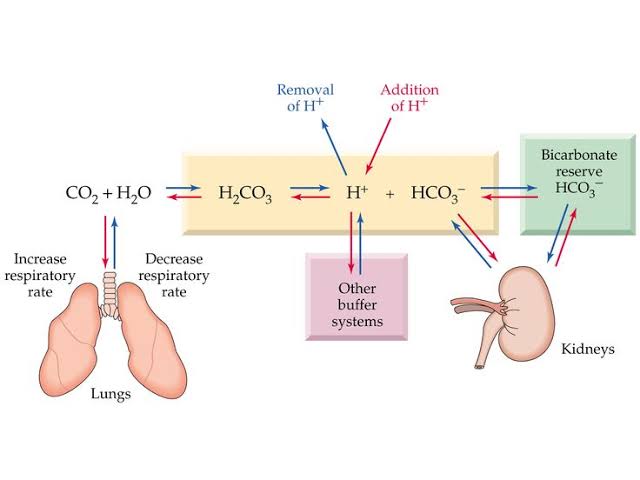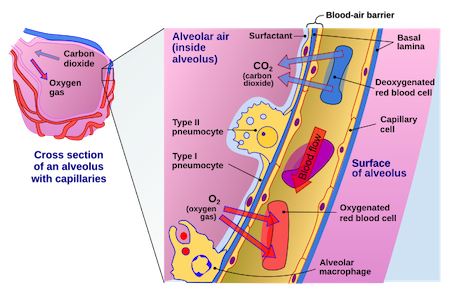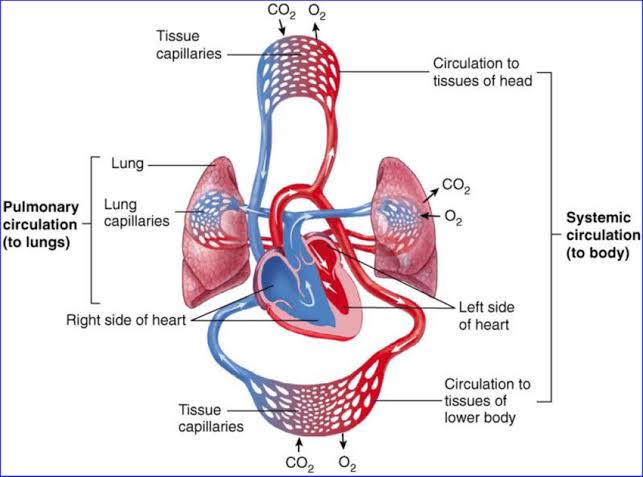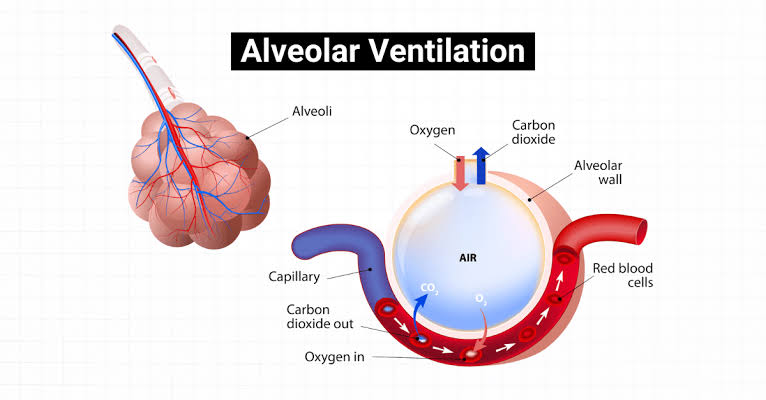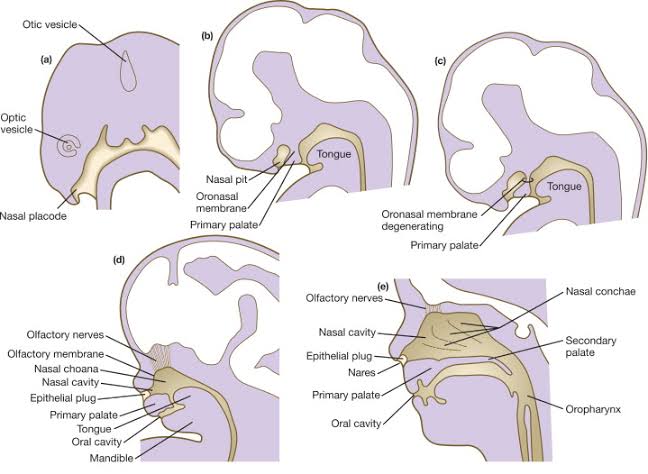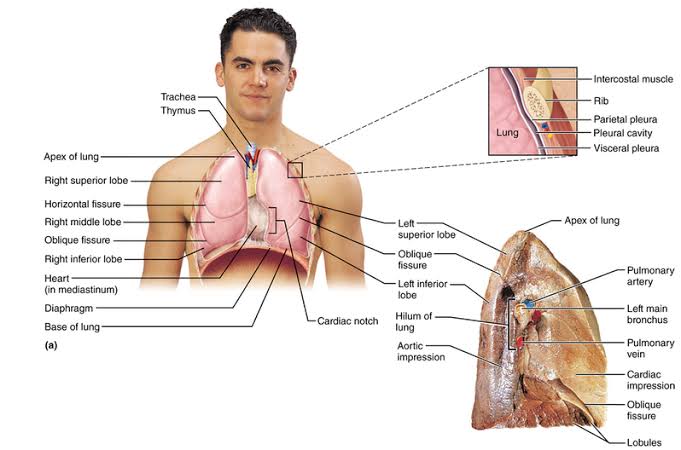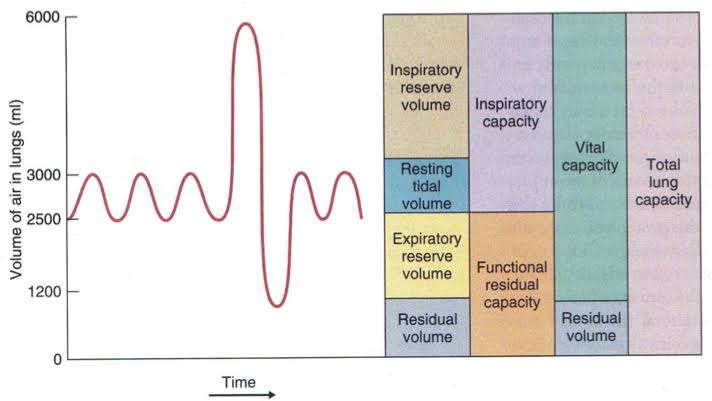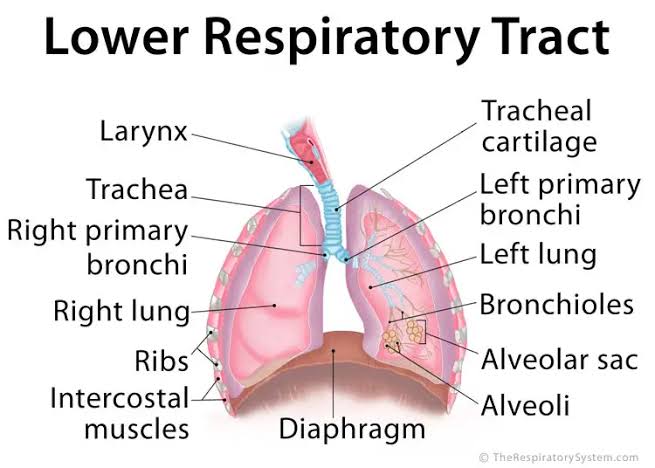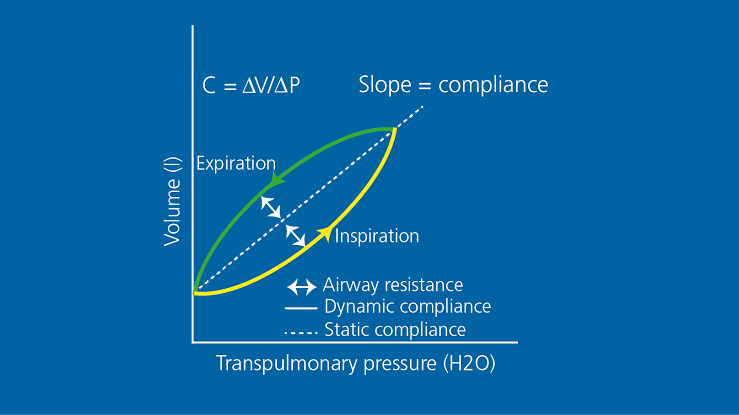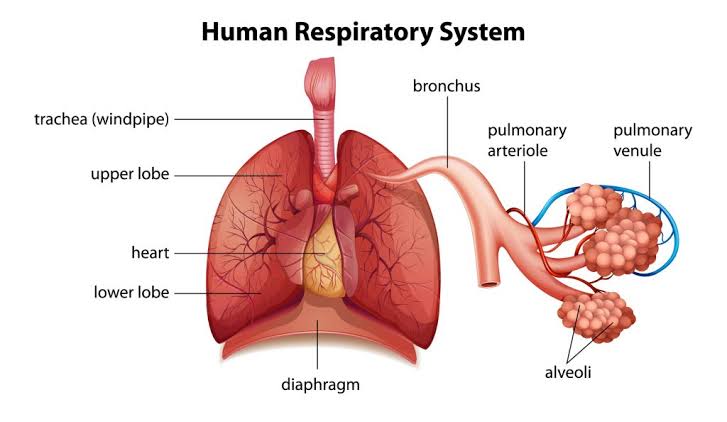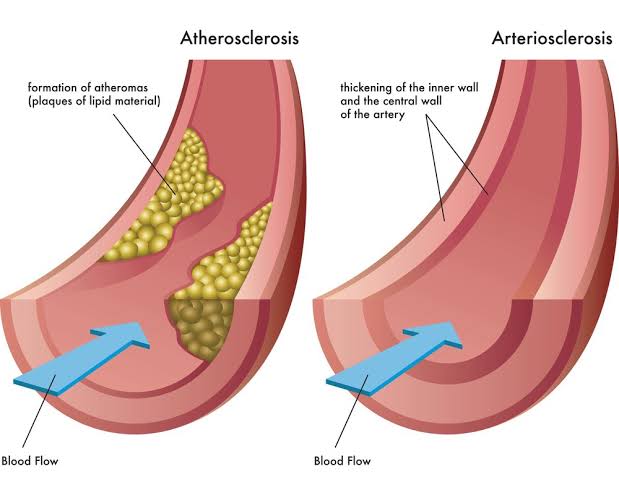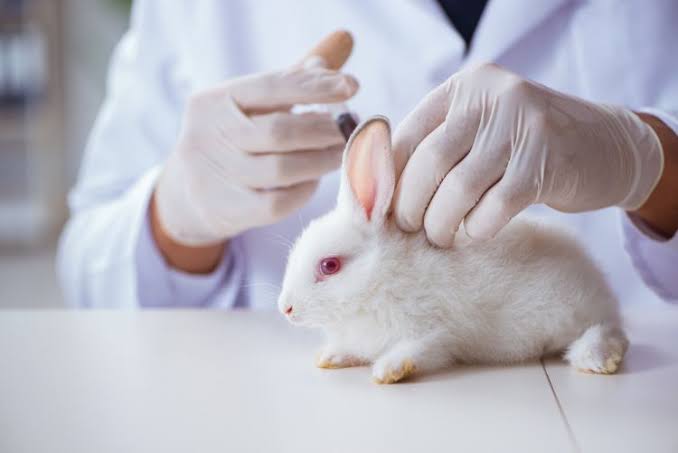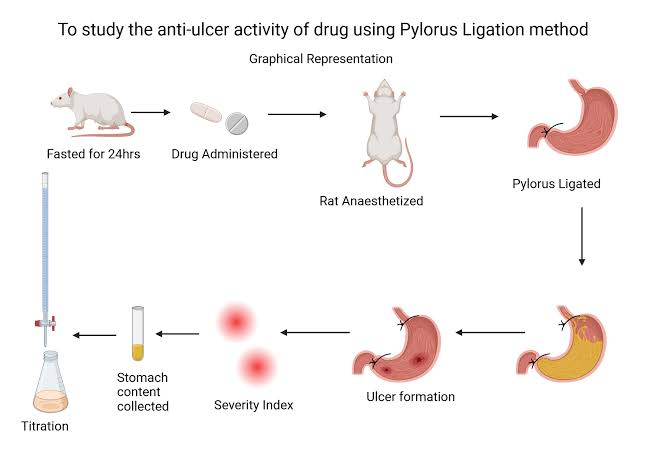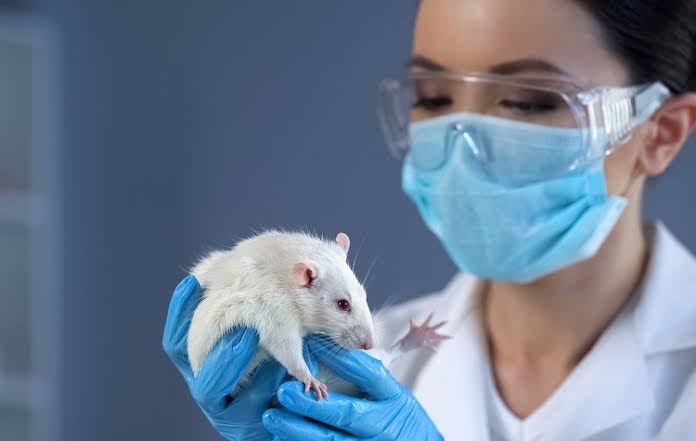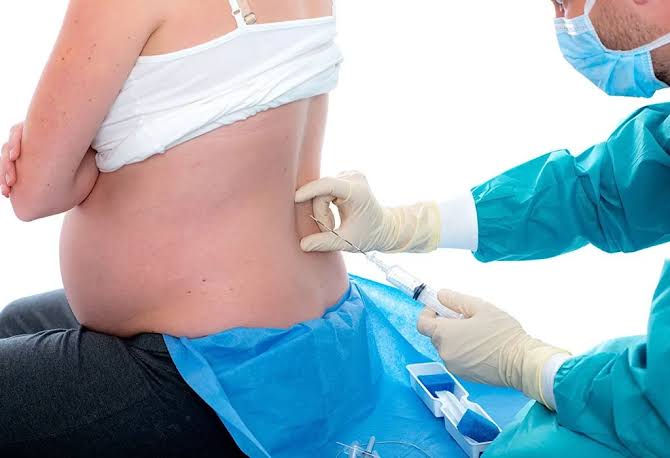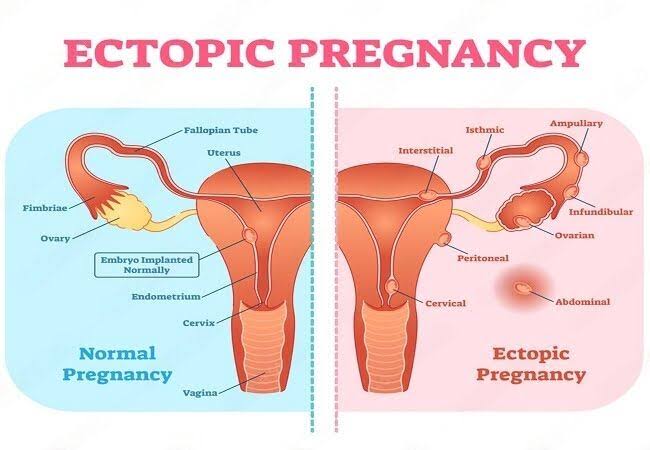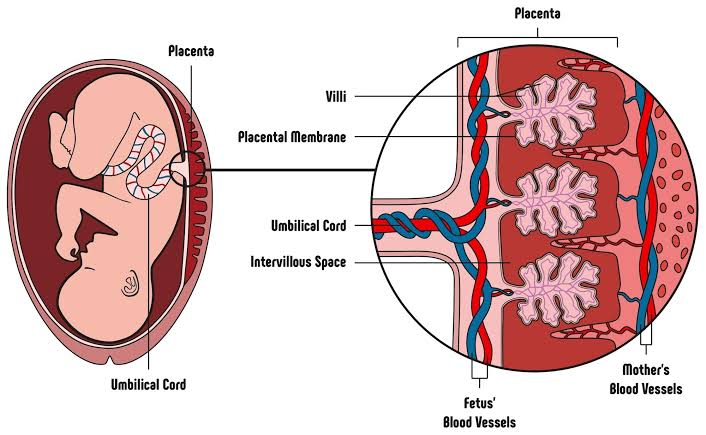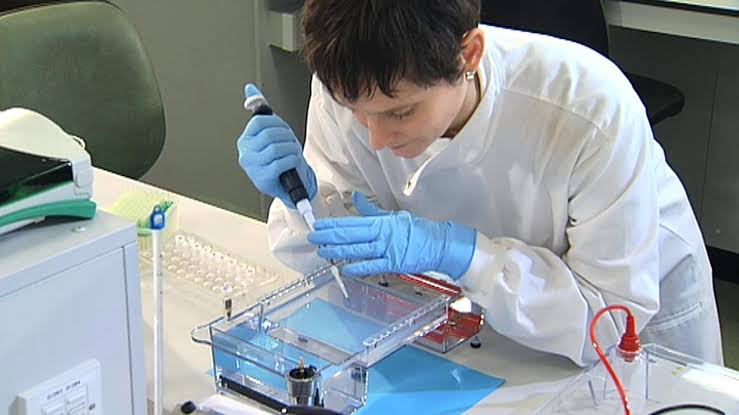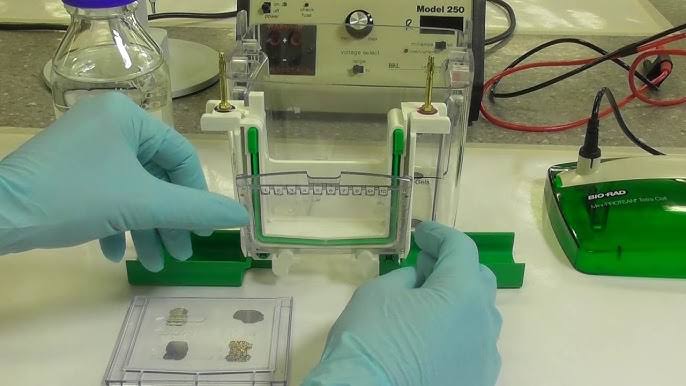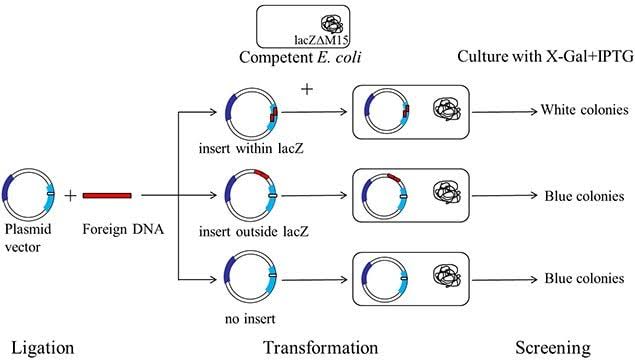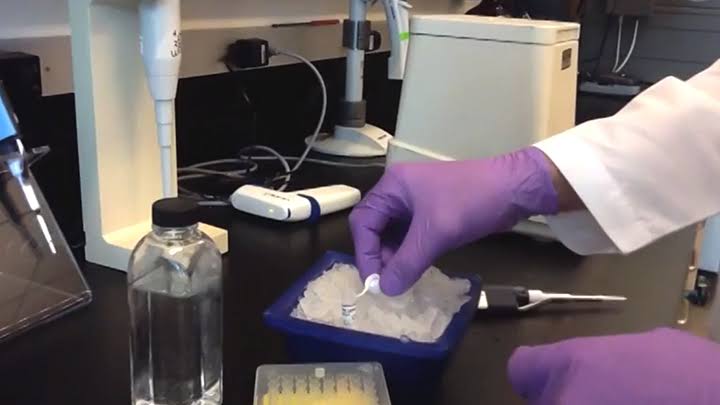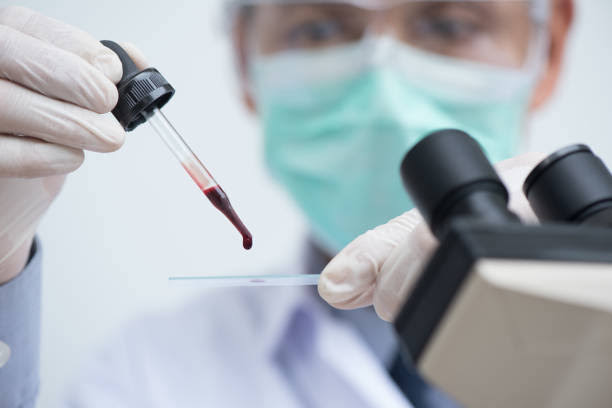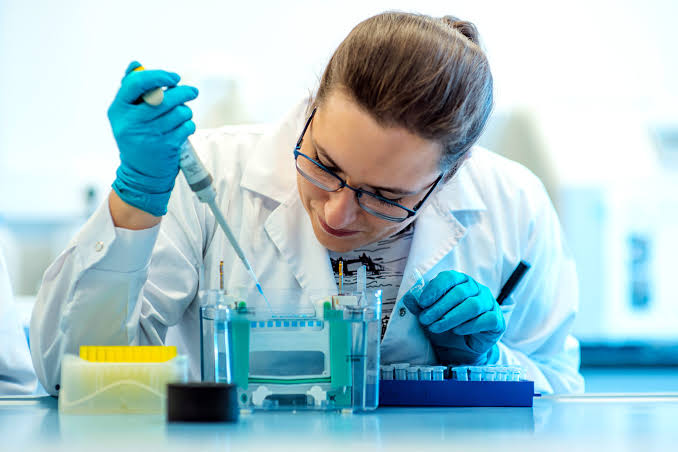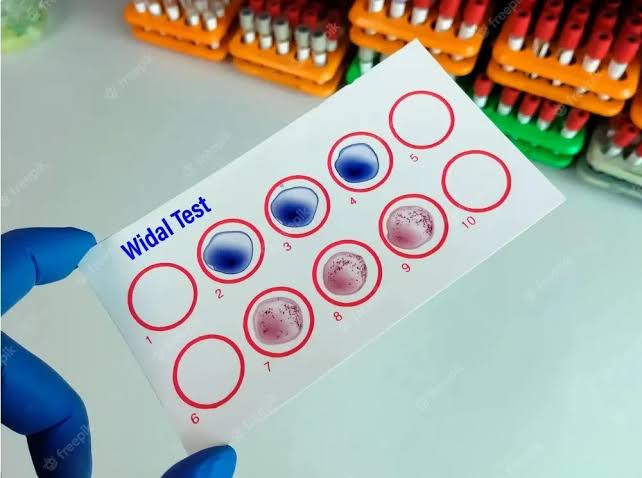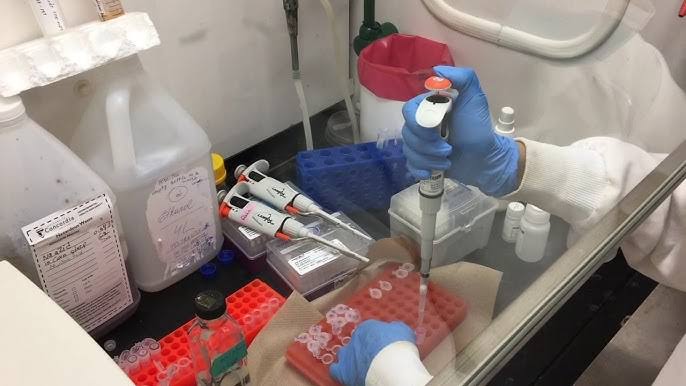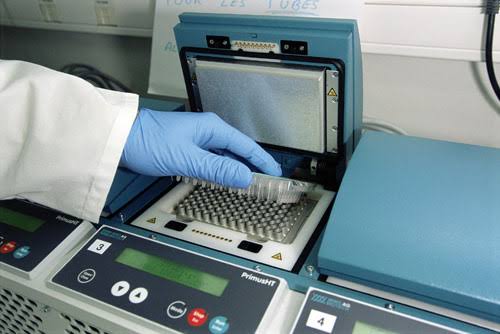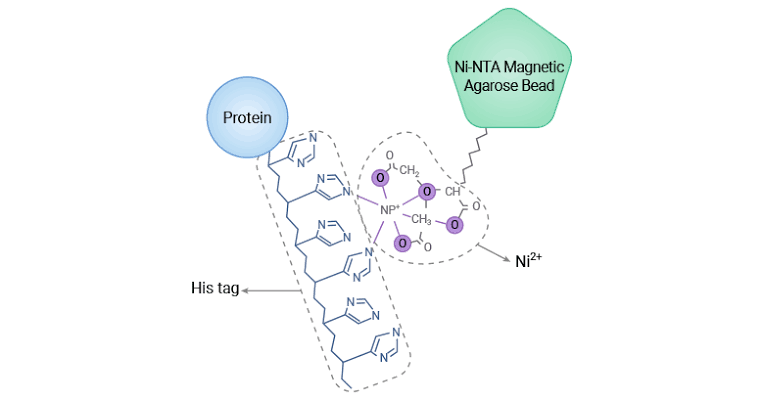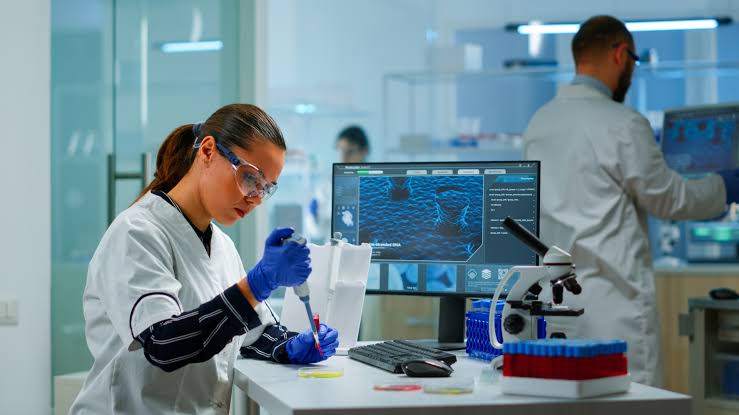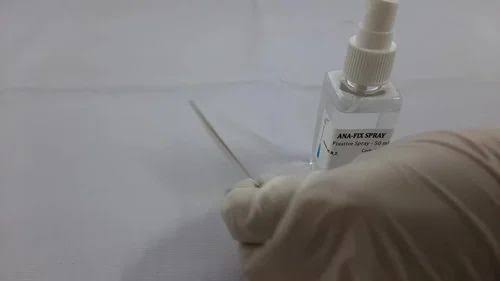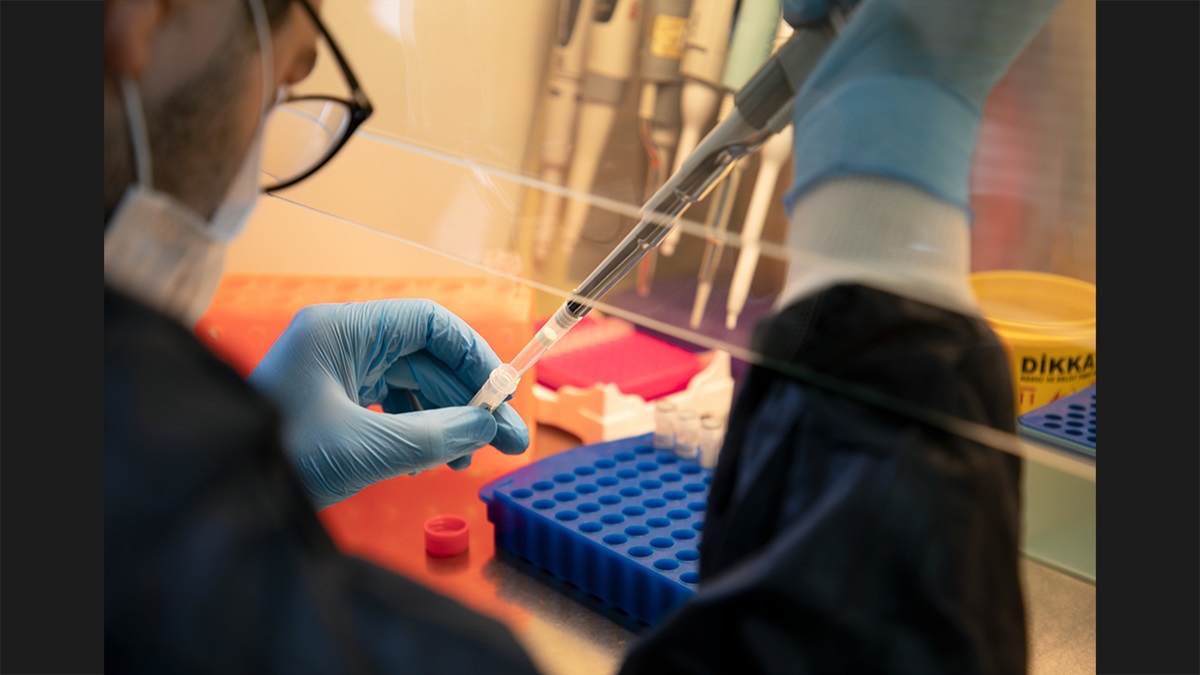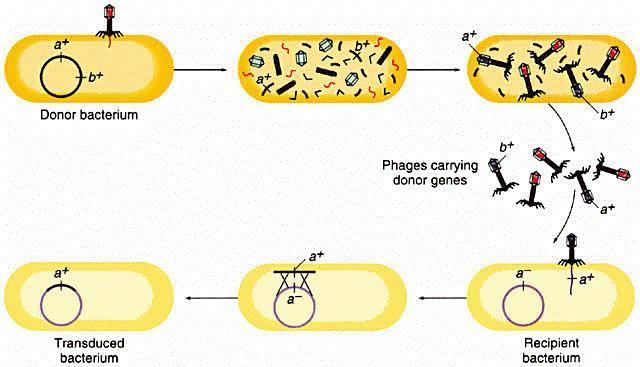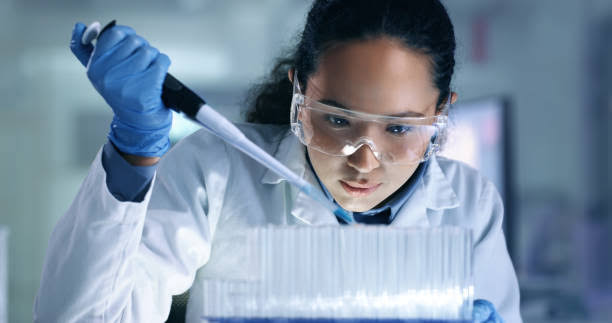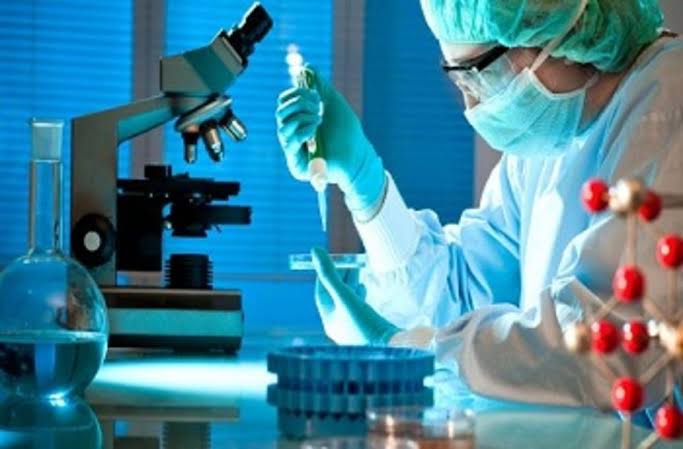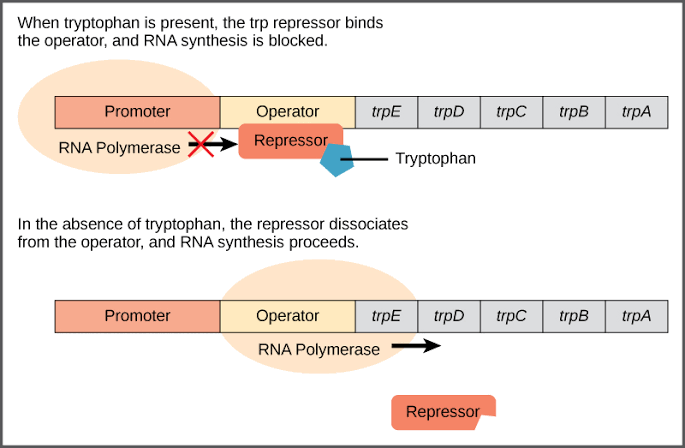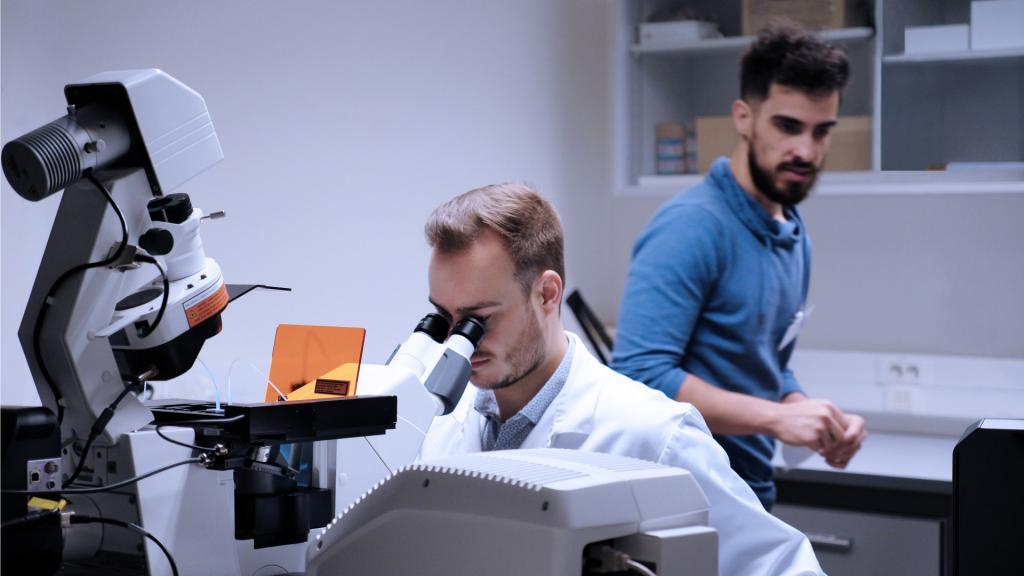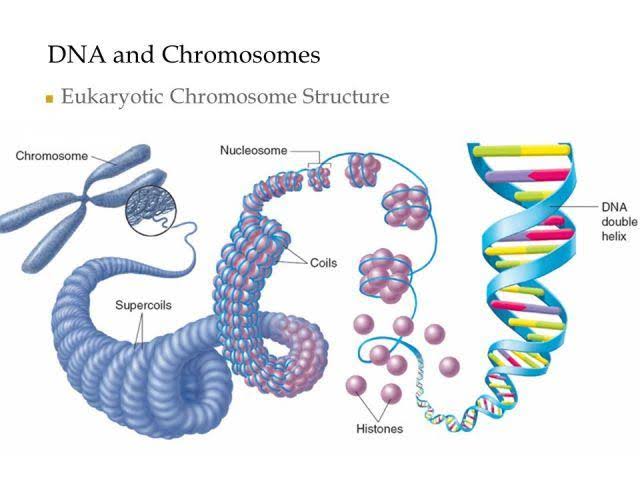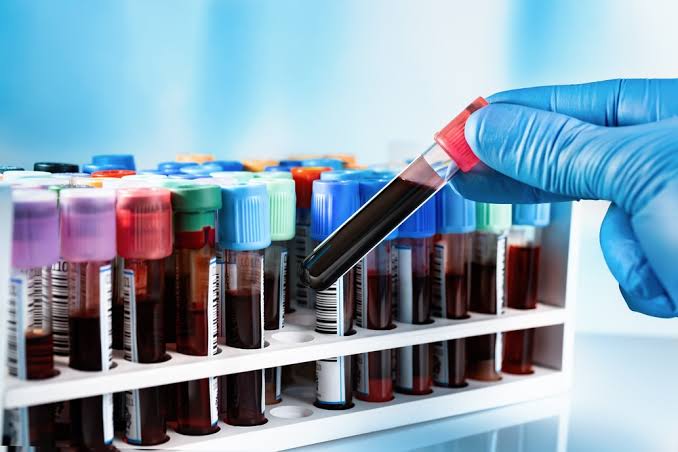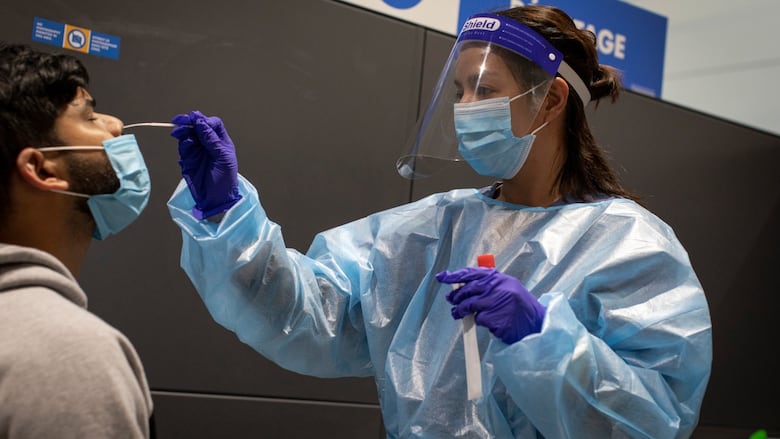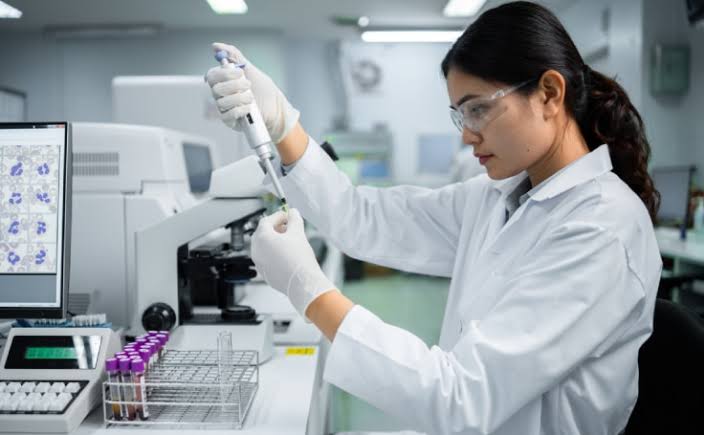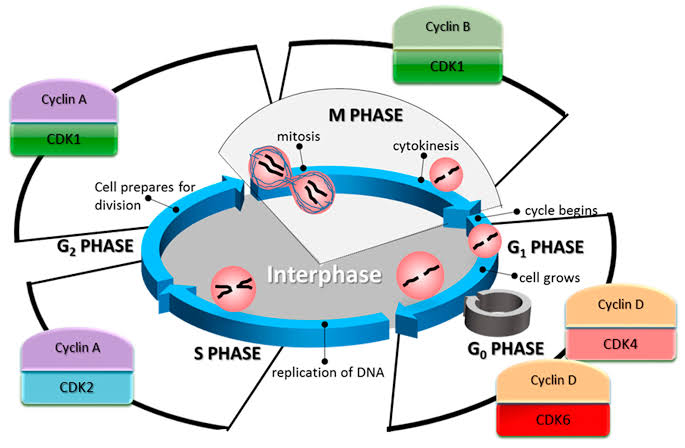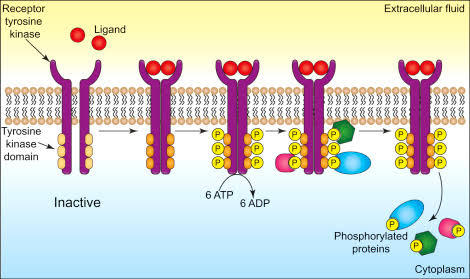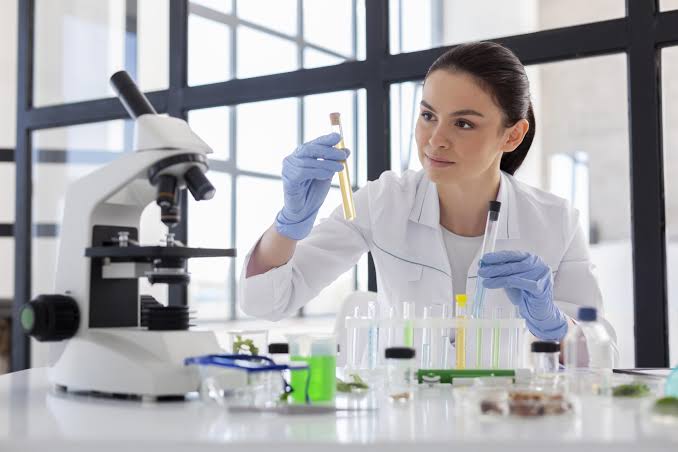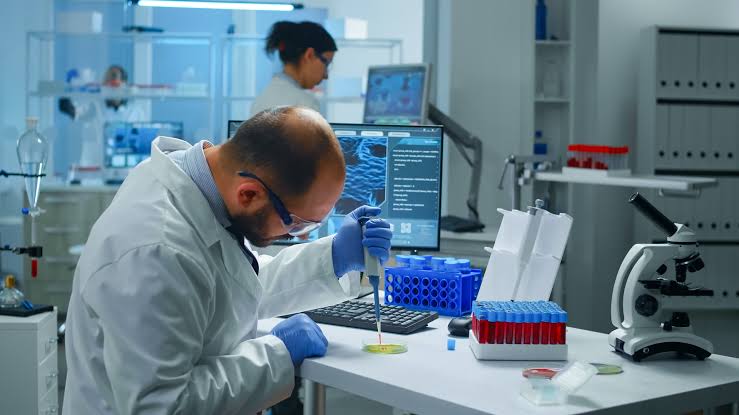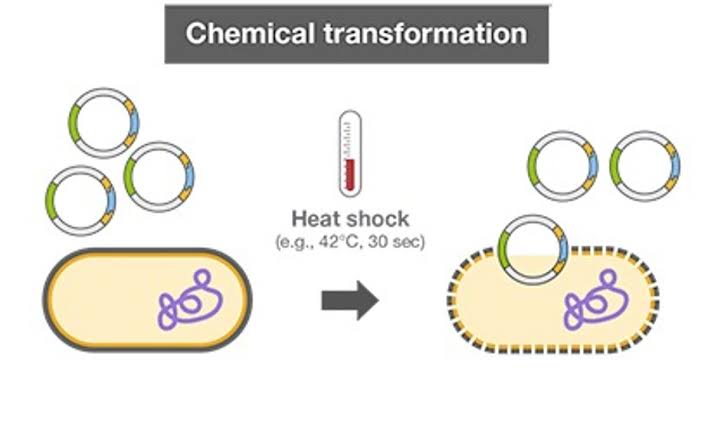Pharmacology of Parathyroid Hormone (PTH), Vitamin D, and Calcitonin (a) Parathyroid Hormone (PTH) PTH is a peptide...
Month: April 2025
Principal Hormones That Affect Blood Glucose Concentration The principal hormones that regulate blood glucose concentration are insulin...
Metabolic Picture in the Well-Fed State and During Starvation (a) Well-Fed State (Absorptive State) The well-fed state,...
Factors Influencing the Frequency and Severity of Diabetes Mellitus in Various Populations 1. Genetic Predisposition: Genetics plays...
Diabetes Mellitus Type 1 and Type 2 (a) Type 1 Diabetes Mellitus (T1DM): Type 1 diabetes is...
Pharmacology of Insulin Insulin is a peptide hormone secreted by the beta cells of the pancreas in...
Biosynthesis of Steroid Hormones Steroidogenesis, the process of steroid hormone biosynthesis, occurs primarily in the adrenal glands...
Physiological Effects of Mineralocorticoids (Aldosterone) Aldosterone, the primary mineralocorticoid hormone, plays a crucial role in maintaining electrolyte...
The adrenal medulla secretes two primary catecholamines: adrenaline (also known as epinephrine) and noradrenaline (also known as...
Pathological Features of Benign and Malignant Tumors of the Adrenal Gland Benign Tumors (Adrenal Adenomas): Gross Appearance:...
Major Physiological Effects of Glucocorticoids Glucocorticoids, such as cortisol, are steroid hormones synthesized and secreted by the...
Pharmacology of Mineralocorticoids Pharmacokinetics Mineralocorticoids, such as aldosterone and its synthetic analogs, exhibit distinct pharmacokinetic properties that...
Pharmacology of Glucocorticoids Pharmacokinetics Glucocorticoids, synthetic analogs of cortisol, exhibit distinct pharmacokinetic properties that influence their clinical...
Most Important Laboratory Methods for Hormone Measurement The measurement of hormones in clinical and research laboratories is...
Understanding How Hormonal Lab Tests Are Used to Put a Clinical Diagnosis Hormonal lab tests are critical...
The interpretation of arterial blood gases (ABGs) is the systematic process of analyzing the levels of oxygen...
Classification of Pneumonias Pneumonia is a lung infection that can be classified based on several factors, including...
Lung Volumes and Capacities Lung volumes refer to the specific amounts of air in the lungs during different...
Selection, Collection, and Transport of Throat Swab Specimens for Microbiological Examination Selection of Specimen: Throat swabs are...
Selection, Collection, and Transportation of Sputum Sample Selection Sputum samples are critical for diagnosing respiratory infections such...
Types of Occupational Hazards That Affect the Respiratory System Occupational hazards that impact the respiratory system are...
Pathophysiology of Cough Cough is a vital protective reflex that serves to clear the airways of irritants,...
Concepts of TB Treatment with Special Emphasis on Two Phases of Therapy Tuberculosis (TB) treatment is a...
Histamine Synthesis, Storage, Release, Actions, and Clinical Manifestations of Histamine Shock Histamine Synthesis Histamine is a bioactive...
Etiology of Lung Cancer Lung cancer arises primarily due to genetic mutations and environmental exposures. The most...
Pathology of Pulmonary Primary Tuberculosis (TB) Primary tuberculosis refers to the initial infection caused by Mycobacterium tuberculosis in individuals who...
Morphology, Structure, Staining, and Cultural Characteristics of Mycobacterium tuberculosis Mycobacterium tuberculosis (M. tuberculosis) is a rod-shaped, non-motile,...
Different Presentations of Upper Respiratory Tract Infections in Children Upper respiratory tract infections (URIs) are among the...
Definition of Atypical Pneumonia and Its Etiology and Pathology Atypical pneumonia refers to a type of pneumonia that...
Definition of Pneumonia and Pneumonitis Pneumonia is an inflammatory condition of the lung primarily affecting the alveoli, typically...
Structure, Clinical Classification, and Significance in Disease Process Fungi involved in respiratory tract infections are classified into...
Definition of Restrictive Lung Disease Restrictive lung disease refers to a group of respiratory disorders characterized by reduced...
Pathophysiologic Changes Targeted in Bronchial Asthma Treatment Bronchial asthma is a chronic inflammatory disease of the airways characterized...
Pathophysiology of Bronchial Asthma Bronchial asthma is a chronic inflammatory disease of the airways characterized by airway...
Structure and Morphology Mycoplasma pneumoniae: Mycoplasma species are unique among bacteria because they lack a cell wall....
Definition of Obstructive Lung Disease Obstructive lung disease refers to a group of respiratory conditions characterized by difficulty...
Morphology and Structure 1. Pseudomonas Morphology: Pseudomonas species, particularly Pseudomonas aeruginosa, are Gram-negative, rod-shaped bacteria. They possess a...
Function of the Dorsal and Ventral Groups of Respiratory Neurons, the Pneumotaxic Center, and the Apneustic Center...
Microorganisms Involved in Lower Respiratory Tract Infections (LRTIs) Lower respiratory tract infections (LRTIs) are caused by a...
The Tense and Relaxed Forms of Hemoglobin Tense (T) Form: The tense (T) form of hemoglobin is...
Structure and Role of the Heme Prosthetic Group The heme prosthetic group is an essential component of both...
Definition of Ventilation–Perfusion Ratio The ventilation–perfusion ratio (V/Q ratio) is a measure used in respiratory physiology to assess...
The production of oxygen free radicals intermediates. Oxygen free radical intermediates, also known as reactive oxygen species...
The Bicarbonate Buffer System The bicarbonate buffer system is a critical acid-base homeostatic mechanism that maintains the pH...
Measurement of Partial Pressure of Gases Partial pressure is a critical concept in understanding gas exchange. It refers...
Viruses commonly associated with upper respiratory tract infections (URTIs): Rhinoviruses: The most common cause of the common...
Dynamics of Capillary Exchange of Fluid in the Lungs and Pulmonary Interstitial Fluid Capillary exchange in the...
Comparison of Pulmonary and Systemic Circulations The pulmonary and systemic circulations are two distinct components of the...
Definition of Alveolar Ventilation Alveolar ventilation refers to the volume of air that enters and leaves the alveoli...
Development of the Nasal Cavity The development of the nasal cavity begins early in embryogenesis and involves...
Structure and Morphology of Bordetella pertussis and Corynebacterium diphtheriae 1. Bordetella pertussis Bordetella pertussis is a small,...
Anatomical Differences Between the Upper and Lower Respiratory Tract The respiratory system is divided into two main...
Microscopic Structure of the Upper Respiratory Passage, Including the Respiratory Mucosa The upper respiratory passage consists of...
Shape and Outline of the Thoracic Cage Including Inlet and Outlet The thoracic cage, also known as...
Spirometry Spirometry is a pulmonary function test that measures lung function, specifically the volume and flow of...
Description of the Trachea, Its Relations, and Subdivisions The trachea, also known as the windpipe, is a...
Mechanics of Pulmonary Ventilation Pulmonary ventilation, or breathing, is the process of moving air into and out...
Structure of the Nasal Cavity Including Nasal Septum The nasal cavity is the internal part of the...
General Structures and Organs of the Respiratory System The respiratory system is a complex network of organs and...
Definition of Arteriosclerosis Arteriosclerosis refers to the general term for the thickening, hardening, and loss of elasticity of...
The Rabbit Pyrogen Test (RPT) is one of the oldest and most widely recognized methods for detecting...
Pylorus Ligated (Shay) Rat Model The pylorus ligation model, also known as the Shay rat model, is...
Introduction to Mast Cell Stabilization Assay Mast cells play a critical role in allergic reactions and immune...
Indications for Analgesia and Anesthesia in Obstetrics Analgesia and anesthesia in obstetrics are primarily indicated for: Labor...
Definition of Intra-uterine Growth Retardation (IUGR) and Fetal Macrosomia Intra-uterine growth retardation (IUGR) refers to a condition in...
Definition of Ectopic Pregnancy and Its Incidence Ectopic pregnancy is a condition in which a fertilized egg implants...
Predisposing Factors and Clinical Picture of Pyelonephritis Predisposing Factors Pyelonephritis is a type of urinary tract infection...
The placenta is a vital organ that develops during pregnancy, facilitating the exchange of nutrients and waste...
Pregnancy induces a wide array of physiological changes in a woman’s body to support the developing fetus....
The Double Immunodiffusion test, also known as the Ouchterlony double immunodiffusion assay, is a method used to...
Microagglutination using microtiter plates is a widely used method for blood grouping, particularly for determining ABO and...
Southern hybridization is a molecular biology technique used to detect specific DNA sequences within a complex mixture....
The procedures for restriction digestion of a vector and insert using the restriction enzymes NcoI and XhoI...
Competent cells are bacterial cells that have been treated to allow them to take up foreign DNA...
Agarose gel electrophoresis is a widely used technique in molecular biology for the separation and analysis of...
The alkaline lysis method is a widely used technique for isolating plasmid DNA from bacterial cells. This...
Sodium dodecyl sulfate-polyacrylamide gel electrophoresis (SDS-PAGE) is a widely used technique for separating proteins based on their...
Transformation is a key procedure in genetic engineering that involves introducing foreign DNA into a host organism, typically...
The ligation process using a pET vector involves several key steps, including the preparation of the DNA...
Biochemical tests are essential tools in microbiology for identifying bacterial species based on their metabolic activities. These...
The detection of the Plasmodium pathogen, which causes malaria, is primarily performed through microscopic examination of peripheral...
The extraction and separation of antigen proteins from bacteria and protozoa are critical steps in various fields,...
The Widal test is a serological diagnostic tool used to detect antibodies against Salmonella enterica serotype Typhi, the bacterium...
The assay of urease enzyme activity from horse gram involves several steps, including preparation of the enzyme...
The isolation of RNA from yeast cells involves several critical steps to ensure high yield and quality...
Transformation is a process where foreign DNA is introduced into a bacterial cell, allowing the bacteria to...
Quantification of DNA by spectrophotometry involves several key steps that ensure accurate measurement of DNA concentration and...
The polymerase chain reaction (PCR) is a widely used technique to amplify specific DNA fragments. The process...
Hyper expression of poly-histidine-tagged recombinant proteins and their purification using Ni affinity resin involves several key steps....
The digestion of plasmid DNA with restriction enzymes involves several key steps that ensure the successful cleavage...
Step 1: Design Primers for the scoC Gene The first step in PCR amplification is to design...
Leishman’s stain is a widely used Romanowsky stain for differentiating and identifying various types of white blood...
The analysis of genetic markers in bacteria involves several key procedures, including sample collection, DNA extraction, amplification...
Genetic mapping using P1 transduction is a powerful method for transferring genetic material between bacterial strains, particularly...
The estimation of nucleic acids, specifically DNA and RNA, can be performed using the diphenylamine method for...
Modifying enzymes are a broad category of enzymes that alter the structure of nucleic acids, primarily DNA and...
The isolation of proteins from bacteria, particularly recombinant proteins like Green Fluorescent Protein (GFP), involves several critical...
Paper chromatography is a widely used technique for separating and analyzing mixtures, particularly amino acids. This method relies...
Prokaryotic Gene Expression System Prokaryotic gene expression systems are fundamental mechanisms by which bacteria and archaea regulate...
The detection of GFP (Green Fluorescent Protein) in bacteria using a fluorescence microscope involves several critical steps,...
The organization of the eukaryotic genome is a complex and highly structured arrangement of DNA that allows for efficient...
Molecular diagnostics relies heavily on the quality of biological samples for accurate results. Different types of samples...
(a) RT-PCR Reverse Transcription Polymerase Chain Reaction (RT-PCR) is a laboratory technique used to amplify and quantify RNA....
Step 1: Sample Preparation The first step in isolating DNA from bacteria involves preparing the bacterial sample....
Activation of Cyclin-Dependent Protein Kinases (CDKs) by Cyclin Cyclin-dependent protein kinases (CDKs) are crucial regulators of the...
Classification of Enzyme-Coupled Receptors Enzyme-coupled receptors are a class of membrane proteins that, upon ligand binding, activate...
Step 1: Sample Collection and Preparation The first step in isolating RNA from bacteria involves the collection...
Restriction mapping, digestion, and RFLP analysis of the human HBB gene involve several systematic steps to identify...
Preparation of Bacterial Competent Cells Preparation of bacterial competent cells is a crucial step in the transformation...

